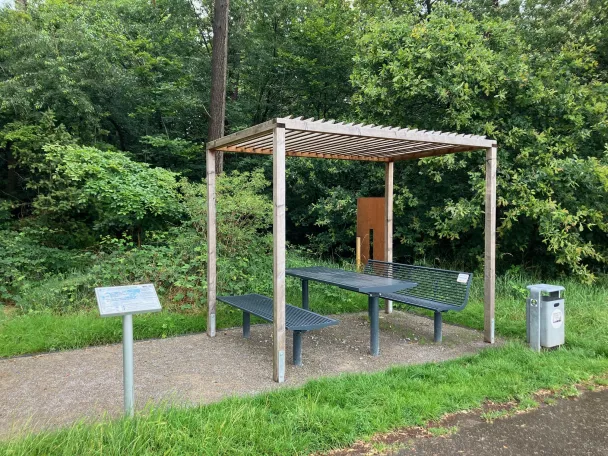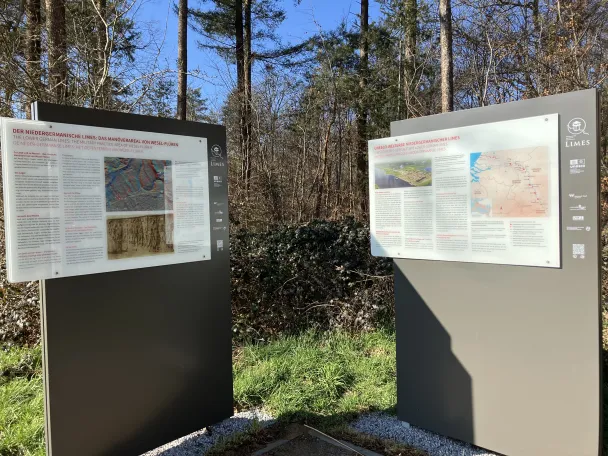UNESCO-World Heritage Site
Lower Germanic Limes
Four Roman marching camps on Wesels territory have been listed as UNESCO-World Heritage Site since 2021.
In Roman times, the Lower Germanic Limes was one of the most important borders of the Roman Empire, stretching over 400 kilometres along the Rhine from Remagen to Katwijk in the Netherlands.
Even if many of the archaeological sites are not always visible at first glance today, modern technology makes it possible to reconstruct exciting history: Such as in Wesel-Flüren, where four Roman manoeuvre camps are now recognised as ground monuments in the forest as part of the World Heritage Site on the right bank of the Rhine. They are proof that the Rhine was not a rigid border, but that the Romans did indeed advance into Germanic areas. The close connection to the town of Xanten on the left bank of the Rhine, with its well-researched Roman past, makes the discovery on the Wesel side all the more interesting and shows the far-reaching influence of the Romans on life and culture on both banks of the Lower Rhine.
The new "Roman Landscape Experience" is available as a hiking and cycling route (cycle route will be published shortly) along the Lower Germanic Limes in Wesel and an information station on the UNESCO-World Heritage Site of the Lower Germanic Limes will be set up in the Dike Village Museum in Bislich.
Hiking tour: length 7.2 km with 5 info-points
Cycle tour: 17 km long with 9 info-points
The circular routes start and end in Wesel-Flüren at the info-point for the Wesel section of the Lower German Limes UNESCO World Heritage Site.
Address Flürener Weg diagonally opposite Waldweg 1, 46487 Wesel.

